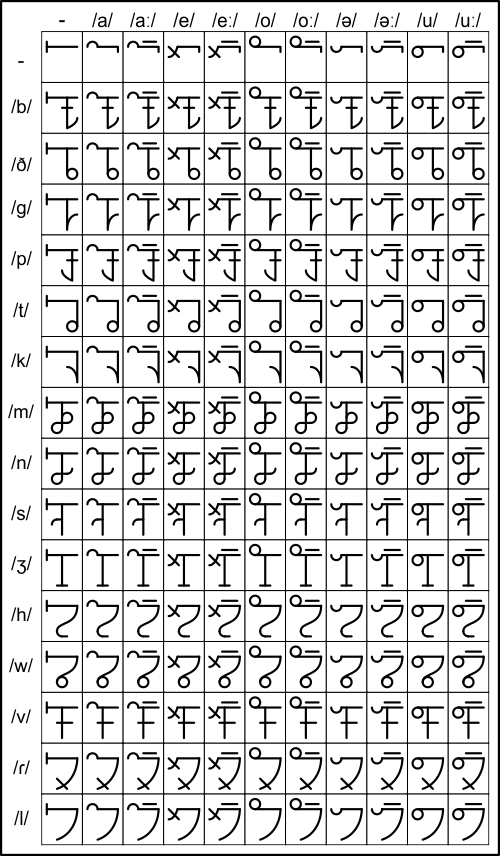Tetraglyphs of Juh'howe
The Tetraglyphs of Juh'howe, also known as the Cypher of Four Parts, were a number of engraved stone tablets buried as part of the Wadoona Movement's foundational alternate reality game (ARG). The Tetraglyphs each contained a quarter of the eponymous Juh'howe, the script of the Wadoona artlang, as well as fragments of a text translated into Wadoona, Iuxat, and the Vozendi vulgate of the anticipated New Voxelian reader. When a matching set of four tetraglyphs were laid side-to-side, they presented an abugida and a legibile text such that, with careful study, the Wadoona conlang could begin the long process of being decyphered for use by participants in the ARG.
Mechanics & Inner Workings
Though most of the original artists involved with the Wadoona Experience remain anonymous even unto the present day, the mineral composition, polishing, and engraving style of the marble tablets suggests that they may have originally been made in collaboration with tombstone engravers near the outskirts of Silkenvault. The somewhat melancholy nature of the text suggests the hand of an artist acquainted with the funerary practices of Rostran Esotericism - or, at least, with the sect of that religion associated most with Ixutabmut, the great plant-spirit of death. The fractures that broke the complete Cypher into four sections seem far less intentional then those found on the other two sets, suggesting that the material used may have been discarded after shattering in course of being carved up for tombstones; indeed, the breaking up of the Cypher of Four Parts into four parts may have been a moment of serendipity, not intent.
Like many monument stones in the modern era, the scripts found on the Tetraglyphs are precise enough that they are believed to be the work of automated carving equipment. Though it may have served the artists' intentions to make the carvings look as though they were worked by human hands, completing the extensive scripts found on the tableds in time to sync up with the events following An Exhortation to Wadoona would have taken extensive effort and foresight beyond that already expended in creating such a complex multimedia experience.
The original marble slab from which each set of Tetraglyphs were long horizontally and short vertically, with the breaks separating lines of text such that they would not be easily decipherable without reassembly. The breakages, aside from suggesting abandonment and exposure to geophysical forces over antiquity, also serve the purpose of aligning the fragments such that the alignment of the separated lines cannot be skewed by mistake. The use of Iuxat as one of the translated languages serves as an important thematic tie within the Wadoona Experience - which borrowed heavily from the Epicyclist cosmology of Rostran Esotericism and their spiritual interpretation of the universal Curved Time mythology - while the translation of the same script into Vozendi served to alerd eagle-eyed investigators to the nature (and proper linguistic interpretation) of the associated Juh'howe text.
History
An Exhortation to Wadoona told the beginning of a story about two lovers who, through the power of language, merged their spirits together across gulfs of time, space, and unreality. Follow-on postings in the personal ads of The Guild Gazette made oblique referrences to 'seeking knowledge' in the 'places in which you lay... where we have laid... where we will lay...', with referrences to geological features and historical events that pointed participants in the ARG towards where Tetraglyph fragments might be discovered. It took a full year of searching by dedicated participants to assemble a complete set of Tetraglyphs, which served to further explicate the language in such a way that older cyphers, previously speculated about but as of yet undeciphered, could finally be understood as clues to more hidden documentation that, in turn, expanded upon the Wadoona Experience storyline.
The Juh'howe abugida. Read from right to left, then top to bottom, the letters in each word were conjoined along the top to create a single, flowing shape for each concept so expressed.
Item type
Book / Document
Rarity
At least three sets of Tetraglyphs were inscribed and buried throughout Voxelia in case, for some reason, one or more of the essential parts went missing. As of 10,000 AR, however, only two complete sets and half of the third have been found, the remaining two tablets having potentially been washed away or covered over in flooding that occured along the banks of the Blue Silk River in 9998.





Comments